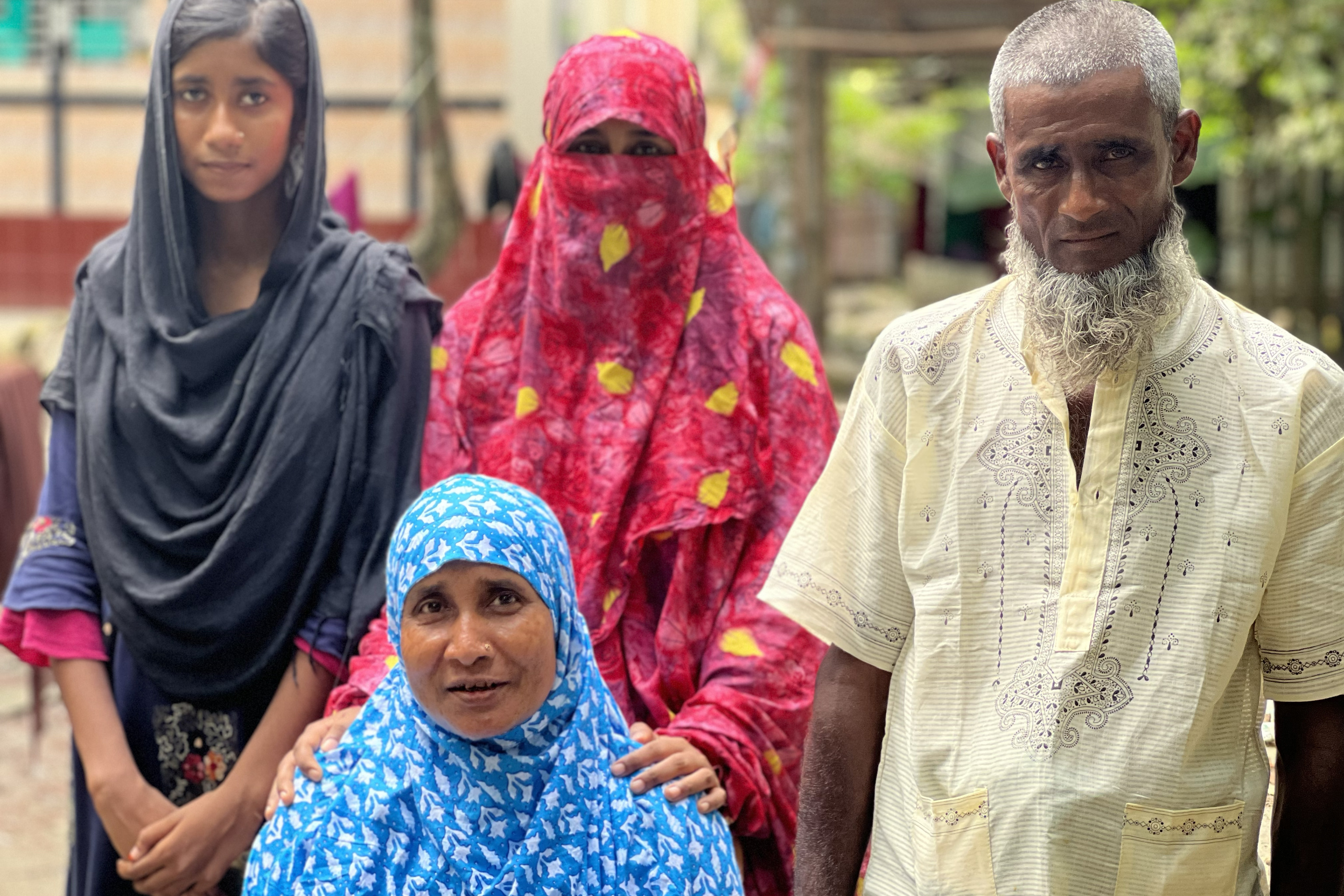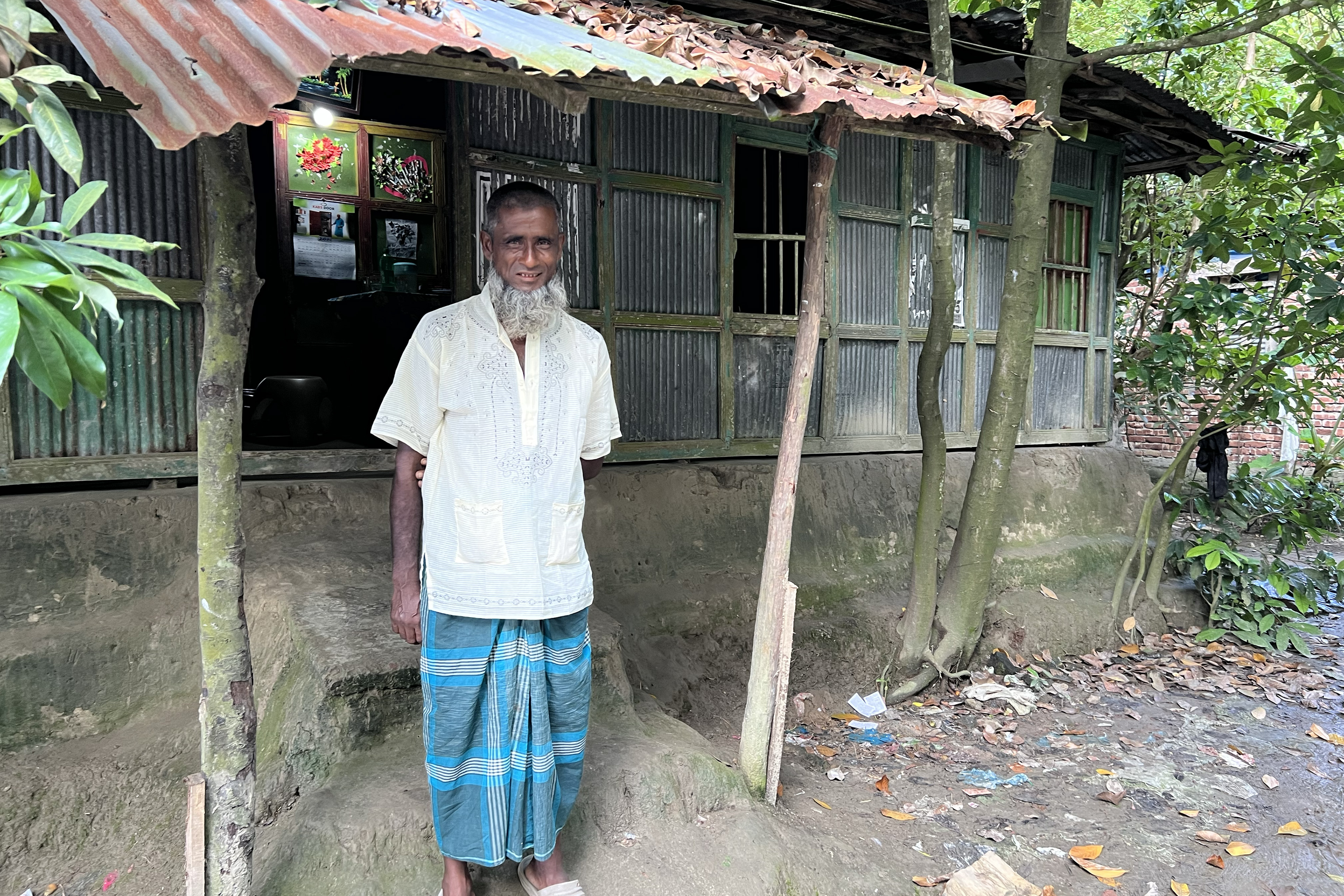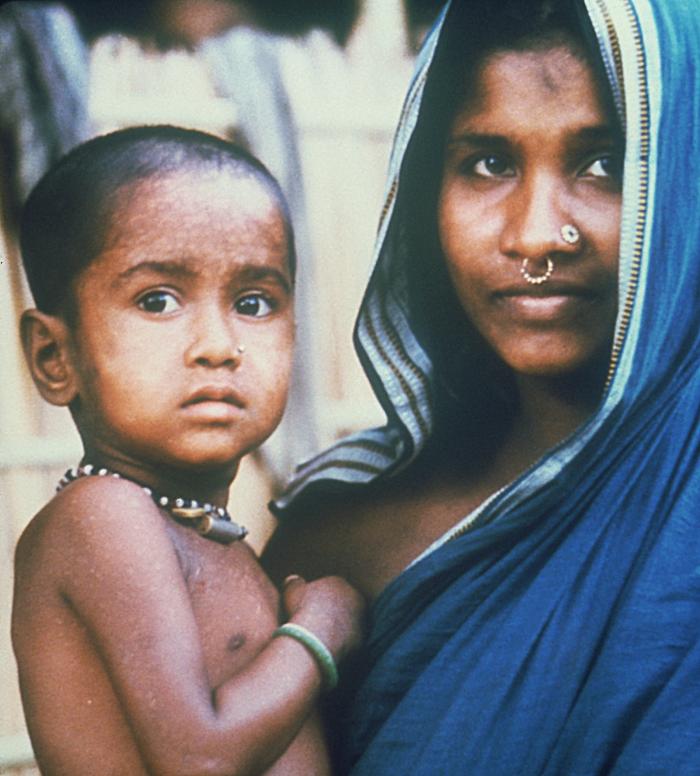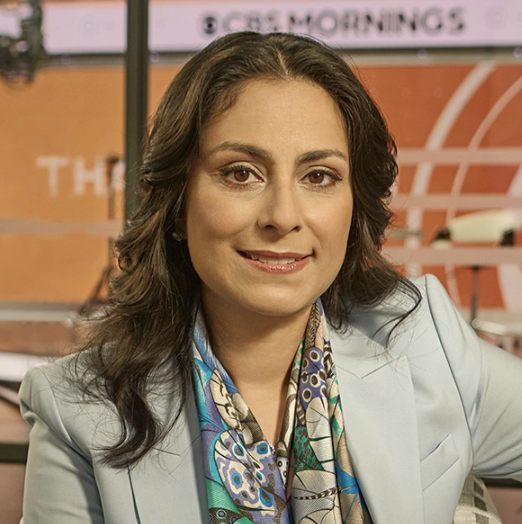Podcast Transcript
Epidemic: “Eradicating Smallpox”
Season 2, Episode 8: The Scars of Smallpox
Air date: Nov. 7, 2023
Editor’s note: If you are able, we encourage you to listen to the audio of “Epidemic,” which includes emotion and emphasis not found in the transcript. This transcript, generated using transcription software, has been edited for style and clarity. Please use the transcript as a tool but check the corresponding audio before quoting the podcast.
Céline Gounder: Just when you thought smallpox was gone someplace, it could roar back.
Alan Schnur: We were aware that in some other countries there had been celebrations and then later found, uh, there had been ongoing transmission that wasn’t detected.
Céline Gounder: The virus was persistent and slippery, but smallpox did end, and Alan Schnur was there when it did.
Alan Schnur: I was one of the team members who was the first international responders to the last case of variola major smallpox.
[Upbeat music begins playing.]
Céline Gounder: The beginning of the end was 1975 in Bangladesh. Alan was in the capital city of Dhaka, meeting with other fieldworkers from the World Health Organization. They were gathered in a Quonset hut. If you’ve ever seen a World War II movie, you know what it looks like: Picture a big tin can cut down the middle — resting on its side.
The meeting was uneventful, which was a change of pace. When Alan first came to Bangladesh, smallpox cases had exploded. The country was reeling from a war for liberation.
But by that day, the outbreak had fizzled.
Alan Schnur: Things had gone very quiet. No reports of any active smallpox cases despite searches going on for several weeks.
Céline Gounder: Alan remembers that the walls of the Quonset hut were covered with maps and manuals documenting their work, and they kept a running tally of suspected cases.
Alan Schnur: And there was a big zero up there on the wall staring down at us for this whole meeting. So we were feeling pretty good at the time.
Céline Gounder: Not a single case of smallpox across the entire country. The team was starting to let themselves feel optimistic. Maybe they’d stamped out the disease here.
[Upbeat music ends.]
Alan Schnur: And then there was a telegram received saying one smallpox case found in Kuralia village in Bhola.
[Suspenseful music begins playing.]
Céline Gounder: The next morning, Alan and the head of the W–H–O mission in Bangladesh took a slow boat through snaking canals to Bhola Island.
[Ambient sounds of a boat on the water play in the background.]
Céline Gounder: Day turned into night. Night into day.
Another boat, then a Land Rover.
Alan Schnur: And the last half-mile, we had to walk to the house where the case was.
Céline Gounder: Finally, they made it.
Alan Schnur: It was a very simple house, certainly poorer than the average Bangladeshi house.
Céline Gounder: Inside was the patient, a little girl. Rahima Banu.
Alan Schnur: She was very scared. She was trying to hide behind her mother’s sari. So she was frightened and trying to to run back inside the house, but her mother kept her there.
Céline Gounder: There’s an iconic photo of Rahima and her mother from that day. Sitting on her mother’s hip, Rahima looks wary. But Alan says all around her there was an air of excitement among the public health workers.
This could finally be it: the last person with naturally occurring variola major smallpox.
Alan Schnur: And we didn’t find any more active cases after Rahima Banu.
[Suspenseful music fades out.]
Céline Gounder: The WHO continued to monitor Bangladesh for a couple of years, but that’s where the story ends for the deadliest version of smallpox. With Rahima Banu, the girl.
She became a symbol of — a poster child for — one of public health’s greatest achievements. But she did not share in the prestige or rewards that came after.
In this final episode of our series “Eradicating Smallpox,” I travel to Bangladesh to meet with Rahima Banu, the woman. We’ll hear how smallpox shaped her life and wrestle with some of the questions that her reality demands of public health.
I’m Dr. Céline Gounder, and this is “Epidemic.”
[“Epidemic” theme music plays then fades to silence.]
[Ambient sounds of chickens squawking in the courtyard outside of Rahima Banu’s home play.]
Céline Gounder: Many people have tracked down Rahima Banu since 1975.
I’m just the latest in a line of public health specialists and curious journalists.
She lives in a village not far from where smallpox workers found her nearly 50 years ago.
As I enter the courtyard of her home, there are clothes hanging on the line. The house is made from bamboo and corrugated metal. The mud stairs that lead inside are dotted with moss.
Inside is one giant room with a partition. On the far side are cots where the family sleeps. On the near side is a table, where I sit with Rahima.
She introduces herself while her husband and two of her daughters sit behind her.
[Rahima speaking in Bengali fades under English translation.]
Rahima Banu: I am Rahima Banu from Bangladesh. Rahima Banu of smallpox fame.
Céline Gounder: Rahima wears a cobalt-blue scarf with white flowers — it’s draped over her head and shoulders and modestly tucked under her chin. A small gold stud sparkles from her nose.
[Sparse music begins playing softly.]
Céline Gounder: She has only a few memories of smallpox. She remembers health workers drawing blood from her fingers, for example. But most of the story that’s made her famous, she knows only from what she’s been told.
[Rahima speaking in Bengali fades under English translation.]
Rahima Banu: There were lesions like this all over the body. My mother said that if you poked them with a lemon cutter, the water rolled down all over the body. As the juice of the dates rolled down when being cut, my blood also dripped like that.
Céline Gounder: While Rahima recovered from smallpox, her family was forced to stay at home while the health workers set a mile-and-a-half radius where they monitored every fever and vaccinated every person.
Two guards monitored the doors of Rahima’s home 24 hours a day. Otherwise, Rahima says, her father would have tried to leave to go find work. He was the lone income earner in the family.
[Rahima speaking in Bengali fades under English translation.]
Rahima Banu: If he had run away, the disease would have spread to other places. That’s why they did not allow us to go anywhere.
Céline Gounder: Alan Schnur says he hired Rahima’s father so the family would have food and an income while they were isolated. And later — a small group of public health workers tried to cobble together some kind of sustainable support for Rahima’s family.
But, eventually the WHO’s help ended. And, ultimately, attempts to prop up the family’s future fell through.
[Sparse music swells, then fades to silence.]
Céline Gounder: Little Rahima grew up. She married and had a family of her own.
The scars of smallpox are visible on her face, but they are faint. Mostly you notice her eyes. They are warm; her slight smile is welcoming.
But Rahima says when visitors like me come to visit, they mostly want to know one thing: Is she still alive?
[Rahima speaking in Bengali fades under English translation.]
Rahima Banu: But no one wants to know how I am living my life with my husband and children, whether I am in a good condition or not, whether I am settled in my life or not.
Céline Gounder: The stories about Rahima are not usually about her life today. They’re about her place in history — as an international symbol of one of the crowning achievements of public health.
But listening to Rahima speak, I’m caught off guard by the pain in her voice.
[Rahima speaking in Bengali fades under English translation.]
Rahima Banu: I feel ashamed of my scars. People also felt disgusted. [Rahima cries.]
Céline Gounder: Rahima is in tears. My reporting partner, Redwan, asks Rahima’s daughter to bring some water.
Redwan Ahmed [in Bengali]: Will you give her some water?
[Solemn music begins playing.]
Céline Gounder: She is around 50 years old when I visit — and the faded pockmarks on her body are perhaps the least of what smallpox left behind. Rahima begins to talk about the emotional scars smallpox left on her family, her life.
And how living in poverty has made things even harder. As an adult, when she had health problems, there was no outside care. No public health workers bustling around, ready to help.
She tells me about a time when she had intense vomiting and fevers.
[Rahima speaking in Bengali fades under English translation.]
Rahima Banu: I was bedridden for three months, but I still could not go to a good doctor because I could not afford it.
Céline Gounder: Rahima says the doctor she did see prescribed her cooked fish heads. She also had trouble with her vision for years.
[Rahima speaking in Bengali fades under English translation.]
Rahima Banu: I cannot thread a needle because I cannot see clearly. I cannot examine the lice on my son’s head. I cannot read the Quran well because of my vision.
[Solemn music fades out.]
Céline Gounder: Rahima and her husband, Rafiqul Islam, have four nearly grown children, three daughters and a son.
The couple’s marriage was arranged, and Rafiqul didn’t know Rahima had had smallpox.
After he found out, people would taunt him, saying he’d married a cursed girl. Still, Rafiqul accepted her.
His family did not.
[Somber music begins playing.]
Céline Gounder: Rahima says her in-laws thought her scars — or smallpox itself — would be passed on to her children.
[Rahima speaking in Bengali fades under English translation.]
Rahima Banu: My father-in-law and mother-in-law never touched my children with their fingers like one touches other children.
My father-in-law, mother-in-law, sister-in-law, and brother-in-law never saw me in a good light.
Céline Gounder: Rahima says she is still living in that suffering. Rafiqul becomes tearful as we sit around their table listening. And at times he gets up and stands behind the partition, as if he doesn’t want us to see his emotion.
Rafiqul says he felt powerless watching how his family treated his wife.
[Rafiqul speaking in Bengali fades under English translation.]
Rafiqul Islam: Do you get it? As a husband, I couldn’t do anything to stop my parents or my siblings. One of my sisters did most of the abuse. I couldn’t do anything but stand in a corner as she was abused.
[Somber music ends.]
Céline Gounder: Their middle daughter is named Nazma Begum. She is tall like her dad — you can tell she’s an eager student. For most of Nazma’s life, people like me have come here to talk with her mother about smallpox.
I ask Nazma what it’s like to be the child of an international symbol.
[Nazma speaking in Bengali fades under English translation.]
Nazma Begum: The good effect is that it is nice to see that you and other people come here. When people come, I like that a lot. The way I feel nice when guests come — it is the same feeling. Apart from that, there was no other effect. It did not help me in any way in my studies or financially.
Céline Gounder: The family’s only income is the money Rafiqul earns peddling a rickshaw. On a good day, he brings home 500 takas — not quite 5 U.S. dollars.
Sometimes he brings home nothing.
Nazma finished a year of college, but her parents can’t afford to pay for her education anymore. She seems desperate to go back to school, but at the time of my visit, the family had arranged for her to get married instead.
The cost of a dowry is less than the cost of sending her to school. It’s a common story here in Bangladesh. But, Nazma says, the people who seek out her mother to talk about smallpox are not really curious about Rahima’s children.
[Nazma speaking in Bengali fades under English translation.]
Nazma Begum: What are their children doing? Up to what class have they studied? In what condition are they living? What do their children want? I think that’s what they should have asked more about. But in this matter, they have no interest or do not want to know.
[Reflective music plays softly.]
Céline Gounder: Nazma is talking to me, but maybe she’s indicting me, too.
Journalists, public health experts, and government officials — we all return to Rahima again and again. Whenever there’s a big anniversary. Or when we’re looking for smallpox lessons — to get through the latest pandemic. And it is a story worth telling.
But then we leave. And Rahima is left behind.
We write up our reports, or publish our podcasts — then raise money around that research and journalism.
In these sometimes sanitized stories, the reality of Rahima’s life after smallpox is left out.
She goes back to her family that can’t afford to see a doctor or send their daughter to university.
It feels extractive — as if we take from Rahima only what we need. And I can’t help but wonder whether I owe her something more.
[Reflective music fades out.]
Céline Gounder: There’s this moment from my time with Rahima that I found later, when I was reviewing the tape from the interview. Initially, I missed it because I don’t speak Bengali. While I was adjusting my recording levels, Rahima and the interpreter are talking about how she’ll introduce herself, and she says maybe we could publish that her son is looking for work.
[Clip of Redwan and Rahima speaking Bengali plays in the background.]
Céline Gounder: It’s such a simple request, so core to what’s on her mind and what she wants.
The interpreter is skilled and polite. He tells her he can’t promise anything but maybe it will come up in the interview.
Of course, it doesn’t — at least not exactly. But at the end of our time together, I ask Rahima what she thinks people should know about her experience.
[Optimistic music begins playing.]
[Rahima speaking in Bengali fades under English translation.]
Rahima Banu: Who wants to know about me? My only dream was to make my son a man. And I wanted to repair the condition of my house, live a better life with my family, and keep my children well. This is my only dream. If I had some financial ability, I would have arranged my daughter’s marriage to a better family. It is the pride of my heart.
It is my dream. And it is my pride. This is my imagination.
Céline Gounder: There is one way, though, that Rahima says her role in history has helped her family.
Her children did not get smallpox. They don’t live with those particular scars.
[Rahima speaking in Bengali fades under English translation.]
Rahima Banu: It did not happen to anyone, and it will not happen.
[Optimistic music fades out.]
[“Epidemic” theme music plays.]
Céline Gounder: “Eradicating Smallpox,” our latest season of “Epidemic,” is a co-production of KFF Health News and Just Human Productions.
Additional support provided by the Sloan Foundation.
This episode was produced by Zach Dyer, Taylor Cook, and me.
Bram Sable-Smith was scriptwriter for the episode, with help from Zach Dyer and Taunya English.
Redwan Ahmed was our translator and local reporting partner in Bangladesh.
Our managing editor is Taunya English.
Oona Tempest is our graphics and photo editor.
The show was engineered by Justin Gerrish.
We had extra editing help from Simone Popperl.
Voice acting by Rashmi Sharma, Priyanka Joshi, and Paran Thakur.
Music in this episode is from the Blue Dot Sessions and Soundstripe.
We’re powered and distributed by Simplecast.
If you enjoyed the show, please tell a friend. And leave us a review on Apple Podcasts. It helps more people find the show.
Follow KFF Health News on X (formerly known as Twitter), Instagram, and TikTok.
And find me on X @celinegounder. On our socials, there’s more about the ideas we’re exploring on our podcasts.
And subscribe to our newsletters at kffhealthnews.org so you’ll never miss what’s new and important in American health care, health policy, and public health news.
I’m Dr. Céline Gounder. Thanks for listening to this season of “Epidemic.”
[“Epidemic” theme fades to silence.]










